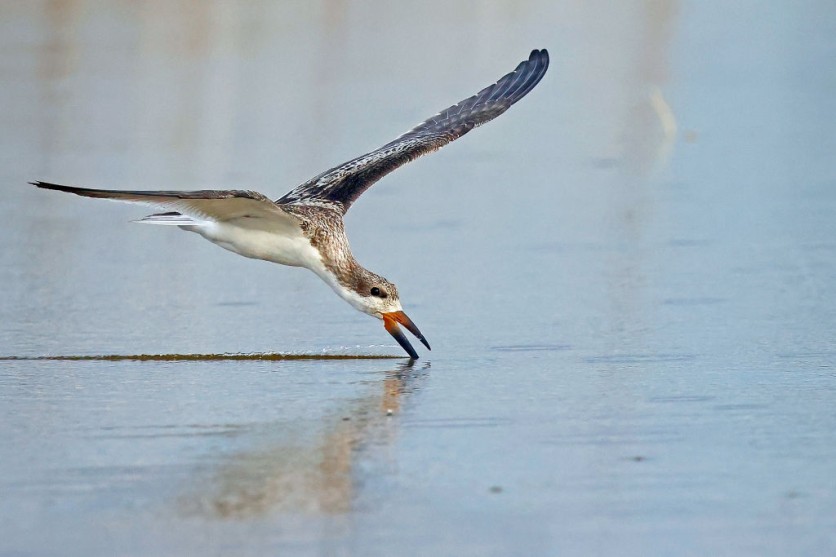In an extraordinary display of avian resilience, a male seabird has defied the odds after navigating an over 700 miles journey through the heart of Typhoon Faxai for a staggering 11 hours.
According to The Ecological Society of America, this courageous act unfolded over southeastern Japan in 2019, offering a rare insight into the tenacity of oceangoing birds in the face of severe weather.
Brave Bird Braves the Storm
This journey was made by a streaked shearwater, a species known for its adeptness in avoiding such situations. Equipped with GPS bio-loggers as part of a nesting behavior study, the Tohoku University biologist Kozue Shiomi provided the means to document this audacious flight.
During the 11-hour ordeal, the shearwater bird reached altitudes of 15,000 feet, attained three times its standard speed, and circled in five full loops spanning up to 50-80 km diameter each and was transported a total distance of 1,146 km (712-mile).

Compared to their typical cruising speeds of 10-60 km/h, this daring bird clocked an astonishing 90-170 km/h. This escapade took it over mainland Japan and back to the Pacific Ocean, all while soaring at an altitude of 4,700 m or 15,420 ft.
Now, researchers from Japan suggest that escalating severe weather events, fueled by climate change, may pose significant challenges for oceangoing seabirds. Under normal circumstances, streaked shearwaters maintain flight speeds of 10-60 km/hr and altitudes below 100 m while at sea.
In stark contrast, data from the tracked bird caught in the storm indicated speeds ranging from 90-170 km/hr, ascending to an altitude of 4700 m, and being carried over mainland Japan before the typhoon retreated into the Pacific Ocean.
While it remains uncertain, it's plausible that the shearwater had the capacity to escape the typhoon but opted to ride it out until it returned to the ocean.
These seabirds typically fly at low altitudes, an efficient strategy over the open sea that also heightens their risk of collisions with structures, power lines, and vehicles when over land.
Moreover, according to the researchers, they struggle on solid ground and face challenges taking off, rendering them susceptible to predation.
How Birds Evade Turbulent Storms
Various pelagic birds employ diverse tactics to evade turbulent storms. For example, the researchers say that red-footed boobies and great frigatebirds often take to the skies, soaring to high altitudes, allowing storms to pass beneath them.
In contrast, Eastern brown pelicans opt to stay grounded until conditions improve. Some birds even choose to remain within the eye of the storm, where winds are comparatively calmer.
As global temperatures rise and surface-water temperatures increase, storms in oceanic regions are anticipated to become more frequent and intense.
This prompts inquiries into the ability of oceangoing birds to withstand these powerful storms, which are predicted to become commonplace. The findings of the team were published in the journal Ecology.
Related Article : Study's Amazing Discovery: Chicken Eggshells Can Act as Electrodes to Power Batteries

![Apple Watch Series 10 [GPS 42mm]](https://d.techtimes.com/en/full/453899/apple-watch-series-10-gps-42mm.jpg?w=184&h=103&f=9fb3c2ea2db928c663d1d2eadbcb3e52)



